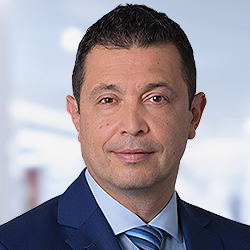Overview
Fund Tagline
This Closed-End Fund seeks a high level of income; capital appreciation is secondary.
Fund Description
View important disclosureProduct Facts
| Ticker Symbol | IGD |
| CUSIP | 92912T100 |
| Inception Date | March 28, 2005 |
| Dividends Paid | Monthly |
- Invests in global common stocks with a history of attractive dividend yields
- Sells call options on selected indices and/or on individual securities and/or ETFs to seek gains and lower volatility of total returns over a market cycle
- May partially hedge currency exposure to reduce volatility of returns
This Closed-End Fund seeks a high level of income; capital appreciation is secondary.
- Invests in global common stocks with a history of attractive dividend yields
- Sells call options on selected indices and/or on individual securities and/or ETFs to seek gains and lower volatility of total returns over a market cycle
- May partially hedge currency exposure to reduce volatility of returns
This Closed-End Fund seeks a high level of income; capital appreciation is secondary.
Performance
Average Annual Total Returns %
As of November 30, 2025
As of September 30, 2025
| Most Recent Month End | YTD | 1 YR | 3 YR | 5 YR | 10 YR | Expense Ratios | |
|---|---|---|---|---|---|---|---|
| Gross | Net | ||||||
| Net Asset Value | +15.07 | +10.93 | +10.88 | +10.38 | +7.23 | 0.99% | 0.99% |
| Market Price | +16.56 | +13.86 | +12.29 | +12.31 | +8.03 | ||
| Net Asset Value | +14.02 | +13.37 | +14.51 | +11.35 | +7.60 | 0.99% | 0.99% |
| Market Price | +17.34 | +16.90 | +16.97 | +13.84 | +8.82 | ||
Inception Date: March 28, 2005
The performance quoted represents past performance and does not guarantee future results. Current performance may be lower or higher than the performance information shown. The investment return and principal value of an investment in the Portfolio will fluctuate, so that your shares, when redeemed, may be worth more or less than their original cost. See above "Average Annual Total Returns %" for performance information current to the most recent month-end.
Returns for the other share classes will vary due to different charges and expenses. Performance assumes reinvestment of distributions and does not account for taxes.
Total investment return at net asset value has been calculated assuming a purchase at net asset value at the beginning of the period and a sale at net asset value at the end of the period; and assumes reinvestment of dividends, capital gain distributions and return of capital distributions/allocations, if any, in accordance with the provisions of the dividend reinvestment plan. Net asset value equals total Fund assets net of Fund expenses such as operating costs and management fees. Total investment return at net asset value is not annualized for periods less than one year.
The MSCI World Index captures large and mid cap representation across 23 Developed Markets (DM) countries. With 1,517 constituents, the index covers approximately 85% of the free float-adjusted market capitalization in each country.
The MSCI World Value Net Index captures large and mid-capitalization securities exhibiting overall value style characteristics across developed-market countries around the world. The value investment style characteristics for index construction are defined using three variables: book value to price, 12-month forward earnings to price, and dividend yield. The "Net" version of this index assumes the deduction of a withholding tax on dividend income applicable to non-resident, institutional investors who do not benefit from double taxation treaties. Returns presented for the benchmark index assumes the reinvestment of dividends after the deduction of withholding taxes, using (for international indices) a tax rate applicable to non-resident institutional investors who do not benefit from double taxation treaties.
Past performance does not guarantee future results.
Growth of a $10,000 Investment
For the period 12/31/2015 through 11/30/2025
Ending Value: $20,101.00
The performance quoted in the "Growth of a $10,000 Investment" chart represents past performance. Performance shown is without sales charges; had sales charges been deducted, performance would have been less. Ending value includes reinvestment of distributions.
Average Annual Total Returns %
As of November 30, 2025
As of September 30, 2025
| Most Recent Month End | YTD | 1 YR | 3 YR | 5 YR | 10 YR | Expense Ratios | |
|---|---|---|---|---|---|---|---|
| Gross | Net | ||||||
| Net Asset Value | +15.07 | +10.93 | +10.88 | +10.38 | +7.23 | 0.99% | 0.99% |
| Market Price | +16.56 | +13.86 | +12.29 | +12.31 | +8.03 | ||
| Net Asset Value | +14.02 | +13.37 | +14.51 | +11.35 | +7.60 | 0.99% | 0.99% |
| Market Price | +17.34 | +16.90 | +16.97 | +13.84 | +8.82 | ||
Inception Date: March 28, 2005
The performance quoted represents past performance and does not guarantee future results. Current performance may be lower or higher than the performance information shown. The investment return and principal value of an investment in the Portfolio will fluctuate, so that your shares, when redeemed, may be worth more or less than their original cost. See above "Average Annual Total Returns %" for performance information current to the most recent month-end.
Returns for the other share classes will vary due to different charges and expenses. Performance assumes reinvestment of distributions and does not account for taxes.
Total investment return at net asset value has been calculated assuming a purchase at net asset value at the beginning of the period and a sale at net asset value at the end of the period; and assumes reinvestment of dividends, capital gain distributions and return of capital distributions/allocations, if any, in accordance with the provisions of the dividend reinvestment plan. Net asset value equals total Fund assets net of Fund expenses such as operating costs and management fees. Total investment return at net asset value is not annualized for periods less than one year.
The MSCI World Index captures large and mid cap representation across 23 Developed Markets (DM) countries. With 1,517 constituents, the index covers approximately 85% of the free float-adjusted market capitalization in each country.
The MSCI World Value Net Index captures large and mid-capitalization securities exhibiting overall value style characteristics across developed-market countries around the world. The value investment style characteristics for index construction are defined using three variables: book value to price, 12-month forward earnings to price, and dividend yield. The "Net" version of this index assumes the deduction of a withholding tax on dividend income applicable to non-resident, institutional investors who do not benefit from double taxation treaties. Returns presented for the benchmark index assumes the reinvestment of dividends after the deduction of withholding taxes, using (for international indices) a tax rate applicable to non-resident institutional investors who do not benefit from double taxation treaties.
Past performance does not guarantee future results.
Growth of a $10,000 Investment
For the period 12/31/2015 through 11/30/2025
Ending Value: $20,101.00
The performance quoted in the "Growth of a $10,000 Investment" chart represents past performance. Performance shown is without sales charges; had sales charges been deducted, performance would have been less. Ending value includes reinvestment of distributions.
Portfolio
Portfolio Statistics
As of November 30, 2025
| Net Assets millions Net Assets The per-share dollar amount of the fund, calculated by dividing the total value of all the securities in its portfolio, less any liabilities, by the number of fund shares outstanding. | $487.4 |
| Number of Holdings Number of Holdings Number of Holdings in the investment. | 234 |
| Outstanding Shares | 78,868,514 |
| Total |
Top Holdings
As of November 30, 2025
| Meta Platforms, Inc. | 1.91 |
| Johnson & Johnson | 1.86 |
| iShares Russell 1000 Value ETF | 1.66 |
| AbbVie, Inc. | 1.58 |
| Cisco Systems, Inc. | 1.45 |
| Procter & Gamble Co. | 1.36 |
| RTX Corp. | 1.16 |
| PepsiCo, Inc. | 1.10 |
| British American Tobacco PLC | 0.99 |
| Verizon Communications, Inc. | 0.94 |
| Total | #,###.2 |
Portfolio Composition
As of November 30, 2025
| Other | 2.32 |
| Short Terms | 1.46 |
| Stocks | 96.22 |
| Total | #,###.2 |
Sector Weightings
As of November 30, 2025
| Financials | 26.06 |
| Industrials | 13.99 |
| Health Care | 13.33 |
| Consumer Staples | 8.53 |
| Communication Services | 7.90 |
| Information Technology | 5.98 |
| Utilities | 5.73 |
| Energy | 5.71 |
| Real Estate | 3.98 |
| Consumer Discretionary | 3.81 |
| Materials | 2.65 |
| Not Classified - Mutual Fund | 2.35 |
| Total | #,###.2 |
Top Country Weightings
As of November 30, 2025
| United States | 67.55 |
| United Kingdom | 4.86 |
| Canada | 4.48 |
| Japan | 4.38 |
| France | 3.74 |
| Hong Kong | 1.43 |
| Italy | 1.37 |
| Netherlands | 1.37 |
| Australia | 1.22 |
| Spain | 1.16 |
| Total | #,###.2 |
Portfolio Statistics
As of November 30, 2025
| Net Assets millions Net Assets The per-share dollar amount of the fund, calculated by dividing the total value of all the securities in its portfolio, less any liabilities, by the number of fund shares outstanding. | $487.4 |
| Number of Holdings Number of Holdings Number of Holdings in the investment. | 234 |
| Outstanding Shares | 78,868,514 |
| Total |
Top Holdings
As of November 30, 2025
| Meta Platforms, Inc. | 1.91 |
| Johnson & Johnson | 1.86 |
| iShares Russell 1000 Value ETF | 1.66 |
| AbbVie, Inc. | 1.58 |
| Cisco Systems, Inc. | 1.45 |
| Procter & Gamble Co. | 1.36 |
| RTX Corp. | 1.16 |
| PepsiCo, Inc. | 1.10 |
| British American Tobacco PLC | 0.99 |
| Verizon Communications, Inc. | 0.94 |
| Total | #,###.2 |
Portfolio Composition
As of November 30, 2025
| Other | 2.32 |
| Short Terms | 1.46 |
| Stocks | 96.22 |
| Total | #,###.2 |
Sector Weightings
As of November 30, 2025
| Financials | 26.06 |
| Industrials | 13.99 |
| Health Care | 13.33 |
| Consumer Staples | 8.53 |
| Communication Services | 7.90 |
| Information Technology | 5.98 |
| Utilities | 5.73 |
| Energy | 5.71 |
| Real Estate | 3.98 |
| Consumer Discretionary | 3.81 |
| Materials | 2.65 |
| Not Classified - Mutual Fund | 2.35 |
| Total | #,###.2 |
Top Country Weightings
As of November 30, 2025
| United States | 67.55 |
| United Kingdom | 4.86 |
| Canada | 4.48 |
| Japan | 4.38 |
| France | 3.74 |
| Hong Kong | 1.43 |
| Italy | 1.37 |
| Netherlands | 1.37 |
| Australia | 1.22 |
| Spain | 1.16 |
| Total | #,###.2 |
Information provided is not a recommendation to buy or sell any security. Portfolio data is subject to daily change.
Distributions
Payment Frequency: Monthly
| Ex-Date
Ex-Date Date on which a stock begins trading without the benefit of the dividend. Typically, a stock’s price moves up by the dollar amount of the dividend as the ex-dividend date approaches, then falls by the amount of the dividend after that date. | Payable Date
Payable Date Date on which a declared stock dividend or a bond interest payment is scheduled to be paid. | Record Date
Record Date Date on which a shareholder must officially own shares in order to be entitled to a dividend. After the date of record, the stock is said to be ex-dividend. | Monthly Distributions | Section 19 Notice* |
|---|---|---|---|---|
| 12/01/2025 | 12/15/2025 | 12/01/2025 | $0.0500 | |
| 11/03/2025 | 11/17/2025 | 11/03/2025 | $0.0500 | |
| 10/01/2025 | 10/15/2025 | 10/01/2025 | $0.0500 | |
| 09/02/2025 | 09/15/2025 | 09/02/2025 | $0.0500 | |
| 08/01/2025 | 08/15/2025 | 08/01/2025 | $0.0500 | |
| 07/01/2025 | 07/15/2025 | 07/01/2025 | $0.0500 | |
| 06/02/2025 | 06/16/2025 | 06/02/2025 | $0.0500 | |
| 05/01/2025 | 05/15/2025 | 05/01/2025 | $0.0500 | |
| 04/01/2025 | 04/15/2025 | 04/01/2025 | $0.0500 | |
| 03/03/2025 | 03/17/2025 | 03/03/2025 | $0.0500 | |
| 02/03/2025 | 02/18/2025 | 02/03/2025 | $0.0500 | |
| 12/30/2024 | 01/15/2025 | 12/30/2024 | $0.0500 | |
| 12/02/2024 | 12/16/2024 | 12/02/2024 | $0.0500 | |
| Totals: $0.6500 | ||||
Access Section 19 notices.
The Fund estimates that it has distributed more than its income and net realized capital gains; therefore, a portion of your distribution may be a return of capital, which will have the effect of reducing your cost basis in the Fund’s shares and thereby increasing the amount of capital gain, if any, or decreasing the amount of capital loss, if any, that you will realize when selling or exchanging Fund shares. A return of capital may occur, for example, when some or all of the money that you invested in the Fund is paid back to you. A return of capital does not necessarily reflect the Fund’s investment performance and should not be confused with ‘yield’ or ‘income’. When distributions exceed total return performance, the difference will reduce the Fund's net asset value per share. The final determination of the tax characteristics cannot be determined until after year end and reported to shareholders on Form 1099-DIV at that time.
To obtain an estimate of the components for each distribution please refer to the distribution press releases.
The Fund intends to make regular quarterly distributions based on the past and projected performance of the Fund.
The tax treatment and characterization of the Fund’s distributions may vary significantly from time to time, depending on whether the Fund has gains or losses on the call options written on its portfolio versus gains or losses on the equity securities in the portfolio. The Fund’s distributions will normally reflect past and projected net investment income, and may include income from dividends and interest, capital gains and/or a return of capital. The final composition of the tax characteristics of the distributions cannot be determined with certainty until after the end of the year, and will be reported to shareholders at that time. The amount of quarterly distributions will vary, depending on a number of factors. As portfolio and market conditions change, the rate of distributions on the common shares will change. There can be no assurance that the Fund will be able to declare a distribution in each period.
Investment Team
Disclosures
Principal Risks
All investing involves risks of fluctuating prices and the uncertainties of rates of return and yield inherent in investing. You could lose money on your investment and any of the following risks, among others, could affect investment performance. The following principal risks are presented in alphabetical order which does not imply order of importance or likelihood: Company; Currency; Derivative Instruments; Dividend; Environmental, Social, and Governance (Quantitative); Foreign (Non-U.S.) Investments/ Developing and Emerging Markets; Investment Model; Liquidity; Manager; Market; Market Capitalization; Market Disruption and Geopolitical; Operational; Option Writing; Other Investment Companies; Securities Lending. Investors should consult the Fund’s Prospectus and Statement of Additional Information for a more detailed discussion of the Fund’s risks. The prospectus should be read carefully before investing. Consider the Fund’s investment objective, risks, and charges and expenses carefully before investing.
The Fund may purchase put and call options and may write (sell) put options and call options and is subject to Options Risk. The risk in writing a call option is that the Fund gives up the opportunity for profit if the market price of the security increases and the option is exercised. The risk in buying an option is that the Fund pays a premium whether or not the option is exercised. Risks may also arise from an illiquid secondary market or from the inability of counter-parties to meet the terms of the contract. When an option is exercised or closed out, the Fund may be required to sell portfolio securities or to deliver portfolio securities to satisfy its obligations when it would not otherwise choose to do so, or the Fund may choose to sell portfolio securities to realize gains to offset the losses realized upon option exercise. Such sales or delivery would involve transaction costs borne by the Fund and may also result in realization of taxable capital gains, including short-term capital gains taxed at ordinary income tax rates, and may adversely impact the Fund’s after-tax returns.
The fund discussed may be available to you as part of your employer sponsored retirement plan. There may be additional plan level fees resulting in personal performance that varies from stated performance. Please call your benefits office for more information.



